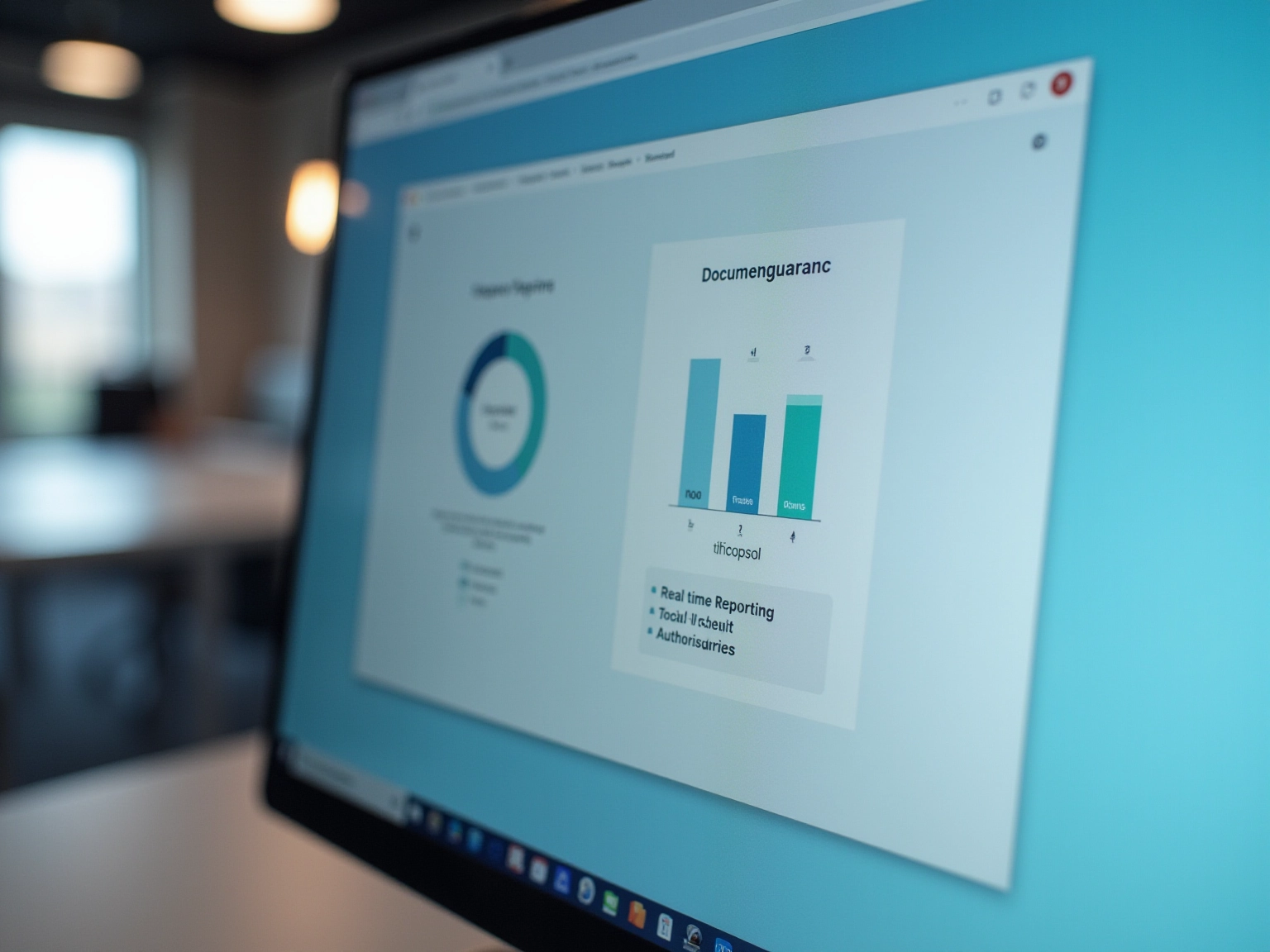Overview
CPE, which stands for Continuing Professional Education, Cost Per Engagement, or Carbapenemase-Producing Enterobacteriaceae, varies in meaning based on context. This article delves into these definitions, emphasizing the critical role of CPE in:
- Maintaining professional licenses
- Enhancing client engagement in accounting
- Tackling public health challenges posed by antibiotic-resistant bacteria
By illustrating the term’s diverse applications across different sectors, it underscores the necessity for professionals to grasp these concepts thoroughly.
Key Highlights:
- CPE can mean Continuing Professional Education, Cost Per Engagement, or Carbapenemase-Producing Enterobacteriaceae, depending on the context.
- In accounting, CPE is crucial for maintaining licenses and improving client engagement through platforms like Glasscubes.
- Glasscubes enhances communication for accountants by offering automated workflows, real-time reporting, and secure collaboration features.
- In healthcare, CPE refers to antibiotic-resistant bacteria that present significant public health challenges.
- Continuing Professional Education activities include workshops and online courses that improve job performance and career opportunities.
- CPD (Continuing Professional Development) differs from CPE, focusing on broader learning activities rather than license maintenance.
- Professionals face challenges in obtaining CPE credits, which can be overcome by utilizing flexible online learning platforms.
Introduction
In a landscape rich with acronyms, the term “CPE” emerges with multiple interpretations across diverse sectors, each carrying substantial implications.
- Continuing Professional Education, essential for maintaining licences in regulated professions,
- Cost Per Engagement, a critical metric in digital marketing,
- Carbapenemase-Producing Enterobacteriaceae in healthcare.
Grasping these definitions is vital for professionals navigating their respective domains. As industries undergo transformation, the necessity for effective communication and engagement strategies intensifies.
Tools like Glasscubes are revolutionising client interactions in accounting, empowering professionals to manage their workflows efficiently while adhering to the latest standards. This exploration of CPE not only elucidates its varied meanings but also underscores the imperative of continual learning and adaptation in today’s fast-paced environment.
Understanding CPE: Definitions and Contexts
In different contexts, CPE can refer to several terms. The most common meanings include:
- Ongoing Education: A necessity for individuals to retain their licences and remain informed in their areas.
- Cost Per Engagement: A digital marketing metric that measures the cost incurred for each user interaction with an advertisement.
- Carbapenemase-Producing Enterobacteriaceae: A group of antibiotic-resistant bacteria that pose significant health risks.
For professionals navigating their respective industries, understanding what CPE stands for is vital.
In the accounting field, utilising resources such as collaborative platforms can greatly improve customer engagement. With features such as streamlined information gathering, real time reporting, and automated workflows, this platform addresses common communication inefficiencies that accountants encounter. By using the portal, accountants can enhance response rates and save time, ultimately changing how they engage with customers. This integration of technology not only facilitates better communication but also helps in managing workloads more effectively, ensuring that accountants can focus on delivering value to their clients.
Additionally, this platform offers various pricing plans, including the Essential, Professional, and Advantage packages, along with support options that cater to different needs. Furthermore, the platform is ISO27001 and GDPR compliant, ensuring that data security and privacy are prioritised, which is critical for accountants handling sensitive information.

CPE in Digital Marketing: Cost Per Engagement Explained
In the realm of accounting, enhancing customer engagement is not just beneficial; it is essential for effective communication and efficient workflow management. Glasscubes offers a solution that simplifies information collection through automated processes, empowering accountants to gather vital data with significantly reduced effort. With features such as real-time reporting, accountants can gain immediate insights into the status and progress of customer requests, thereby significantly improving response rates and achieving substantial time savings.
The user portal provided by Glasscubes fosters seamless collaboration, enabling external users to interact directly with their accountants, authorise documents, and discuss matters within a secure environment. Moreover, Glasscubes ensures data protection through robust encryption and strict adherence to ISO 27001 and GDPR standards—critical requirements for accountants. The pricing structure is straightforward, featuring a monthly account fee starting at £120, alongside various support packages tailored to meet diverse needs.
This transformation in client engagement not only addresses traditional communication inefficiencies but also maximises the overall effectiveness of accounting practises. By choosing Glasscubes, accounting professionals can elevate their client interactions and streamline their operations, paving the way for enhanced productivity and success.

CPE in Healthcare: Medical Implications and Definitions
In healthcare, when inquiring about CPE, it stands for Carbapenemase-Producing Enterobacteriaceae—a formidable group of bacteria that have acquired resistance to carbapenem antibiotics, rendering infections challenging to manage. These bacteria may reside harmlessly within the gut; however, they pose a severe risk of infection to vulnerable patients. The emergence of CPE constitutes a significant public health crisis, complicating treatment strategies and heightening the risk of outbreaks within healthcare environments.
To combat this pressing issue, implementing effective infection control measures is not just advisable but essential to curtail the spread of these resistant organisms.

Continuing Professional Education: Importance and Benefits
Understanding the significance of Continuing Education (CPE) is essential for maintaining licences and keeping abreast of industry standards. So, what does CPE stand for? CPE activities encompass workshops, seminars, and online courses designed to enhance knowledge and skills. Engaging in CPE offers numerous benefits, including improved job performance, expanded career opportunities, and the agility to adapt to evolving regulations and technology.
For example, accountants are mandated to complete a specific number of CPE hours annually to uphold their CPA designation. This requirement ensures they remain informed about the latest tax regulations and accounting practises.
Leveraging collaborative platforms can significantly enhance the CPE experience for accounting professionals. As highlighted by Steve, an audit manager at MGI, the platform has transformed their audit processes by improving communication and increasing engagement with stakeholders. With Glasscubes, the audit team can efficiently request information, track outstanding items in real-time, and set up automated reminders for clients.
This innovation expedites the information-gathering process while fostering a transparent environment where users can easily access their pending queries and essential documents. Although there were initial concerns regarding client engagement with the new software, the overwhelmingly positive feedback from clients has dispelled those apprehensions. The result is quicker responses and a more organised workflow, allowing accountants to focus on their CPE activities and professional development.

CPD vs. CPE: Key Differences and Considerations
While both CPD and CPE emphasise career advancement, understanding what CPE stands for is essential as it highlights their differences in scope and application. CPD encompasses a broader range of learning activities aimed at enhancing overall career skills, whereas CPE specifically targets the education required to maintain licences in regulated fields. For instance, CPD may include informal learning experiences, such as networking events, while CPE typically involves structured courses with defined credit requirements.
Grasping these distinctions enables experts to effectively customise their development strategies, ensuring they meet both personal and professional goals.
Navigating CPE: Earning Credits and Overcoming Challenges
For many individuals, especially those balancing work and personal commitments, understanding what CPE stands for is crucial to overcoming the challenges of obtaining CPE credits. Identifying accredited programmes that align with career aspirations and comply with licencing requirements is essential. Common obstacles include the struggle to find time for course completion and the need to grasp the specific credit requirements set by regulatory bodies.
To effectively address these challenges, professionals should consider utilising online platforms that offer flexible learning options. These platforms enable individuals to earn credits at their own pace, ensuring they meet their educational obligations while accommodating their busy schedules. By embracing this approach, accounting professionals can navigate the complexities of CPE requirements with confidence and ease.

CPE Across Sectors: A Summary of Its Diverse Meanings
In the realm of accounting, CPE signifies not just continuing professional education but also encompasses tools and features that significantly enhance customer engagement. This leads us to consider: what does CPE truly stand for? With functionalities such as automated reminders, real-time reporting, and secure file sharing, Glasscubes empowers accountants to optimise their communication and operational efficiency. These features simplify information collection and ensure that interactions with clients are both timely and effective.
Recognizing how to leverage these tools is crucial for accounting professionals dedicated to maintaining exceptional standards of client engagement. By embracing Glasscubes, accountants can transform their client interactions, ensuring that every engagement is productive and meaningful. The time to elevate your client engagement strategy is now—consider how Glasscubes can redefine your approach to accounting.

Conclusion
The multifaceted nature of CPE underscores its critical importance across various sectors, with each interpretation carrying distinct implications. From Continuing Professional Education, essential for maintaining professional licences and enhancing knowledge, to Cost Per Engagement in digital marketing that assesses user interaction efficiency, and the pressing health concerns surrounding Carbapenemase-Producing Enterobacteriaceae, comprehending these distinctions is vital for professionals in their respective fields.
In the accounting sector, the integration of tools like Glasscubes exemplifies how technology can significantly enhance client engagement by streamlining workflows and improving communication. The capacity to automate processes, gain real-time insights, and ensure data security not only addresses traditional inefficiencies but also empowers accountants to concentrate on their core competencies. This transformation is crucial as professionals strive to adapt and excel in an ever-evolving landscape.
Furthermore, the importance of ongoing education cannot be overstated. Continuing Professional Education fosters career growth, ensures compliance with industry standards, and equips professionals with the necessary skills to navigate changes in regulations and technology. As sectors continue to evolve, embracing continual learning and leveraging innovative tools will be pivotal in maintaining a competitive advantage and delivering exceptional value. The imperative to understand and adapt to these various interpretations of CPE is evident: it is not merely about keeping pace but also about leading the charge in professional excellence and client satisfaction.
